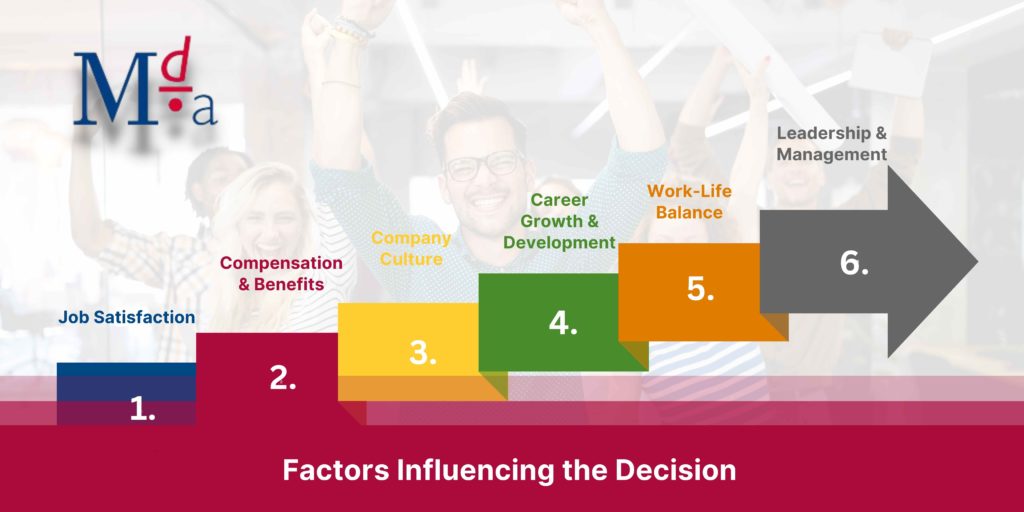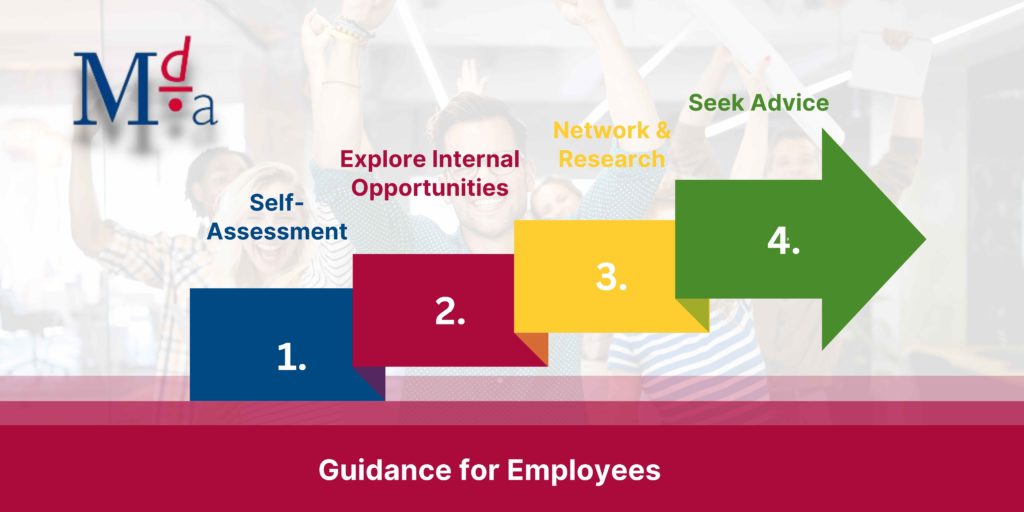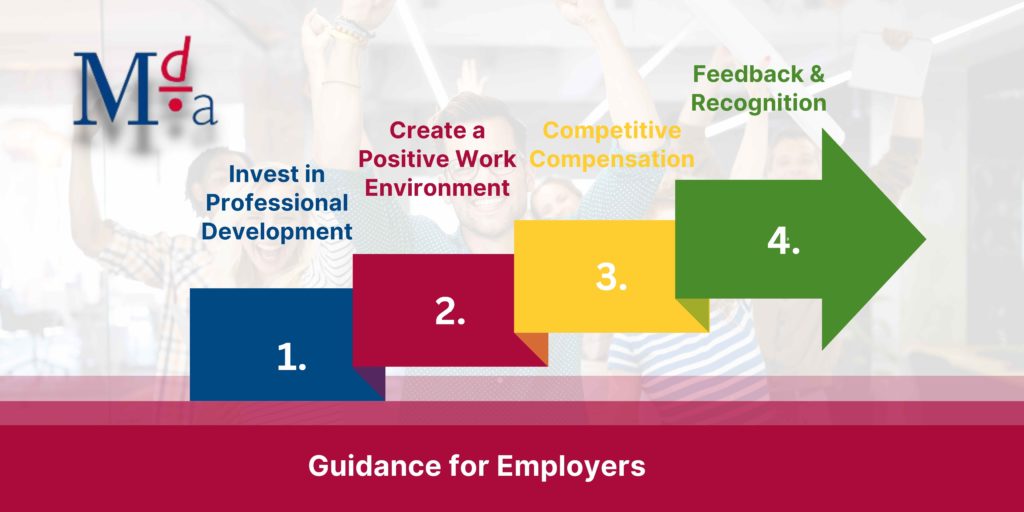Employee retention is a critical concern for organisations across industries. As companies strive to maintain a competitive edge, retaining top talent is essential. The decision of whether to stay with one’s current employer or seek new opportunities elsewhere is a dilemma that many employees face at some point in their careers. In this blog, we will delve into this complex issue, exploring various factors that influence the stay vs. leave decision-making process, offering industry insights, and providing guidance for both employees and employers.
The Current Landscape
The modern workplace is characterised by unprecedented shifts in employment dynamics. Employees are now more proactive in managing their careers, and the gig economy has given rise to greater job mobility. Employers, in turn, are challenged with finding innovative ways to keep their best employees engaged and motivated.
Factors Influencing the Decision

- Job Satisfaction: Job satisfaction remains a cornerstone of employee retention. Satisfied employees are more likely to stay with their current employer. Factors such as meaningful work, opportunities for growth, and work-life balance play pivotal roles in job satisfaction.
- Compensation and Benefits: Competitive compensation packages and attractive benefits can sway the stay vs. leave decision. Employees often weigh their current earnings against potential offers from other organisations.
- Company Culture: A positive company culture fosters a sense of belonging and loyalty among employees. Organisations that prioritise culture tend to retain talent more effectively.
- Career Growth and Development: Opportunities for career advancement and skill development are essential for employee retention. Employees who perceive a clear path for growth within their current organisation are more likely to stay.
- Work-Life Balance: Achieving a healthy work-life balance is increasingly important to employees. Companies that offer flexibility and support in this regard are better positioned to retain their workforce.
- Leadership and Management: Effective leadership and management are crucial in creating a conducive work environment. Poor leadership can be a significant driver of employee turnover.
Industry Insights
- Tech Industry: In the technology sector, rapid innovation and high demand for specialised skills have created a competitive talent market. Companies must offer compelling compensation, innovative projects, and a vibrant work culture to retain tech talent. According to a survey conducted by the Technology Industry Group (TIG), 75% of tech professionals said that they would consider changing employers for better compensation and more challenging projects.
- Healthcare Industry: The healthcare industry is grappling with workforce shortages. Retaining healthcare professionals often involves addressing burnout, improving work-life balance, and providing opportunities for career advancement. A study published by the American Hospital Association (AHA) reported that 92% of healthcare organisations in the United States were experiencing workforce shortages, with 56% of respondents citing burnout as a significant factor contributing to the shortage.
- Retail Industry: High turnover rates are common in the retail sector. Companies in this industry must focus on employee training, recognition programs, and providing clear paths for career growth to enhance retention. A report by the National Retail Federation (NRF) found that the turnover rate in the retail industry was 60.5% in 2021, which is significantly higher than the national average for all industries.
- Financial Services Industry: In finance, employees are often motivated by compensation and opportunities for advancement. Employers must offer competitive salaries and robust mentorship programs to keep their top talent. A survey conducted by the Financial Industry Regulatory Authority (FINRA) found that 78% of finance professionals ranked compensation and career growth opportunities as the top factors influencing their job satisfaction.
Guidance for Employees
- Self-Assessment: Reflect on your career goals, job satisfaction, and work-life balance. Assess whether your current role aligns with your long-term aspirations.
- Explore Internal Opportunities: Before deciding to leave, investigate potential opportunities for growth within your current organisation. Discuss your career goals with your supervisor.
- Network and Research: Leverage your professional network to explore external opportunities. Research potential employers thoroughly to ensure they align with your values and career objectives.
- Seek Advice: Consult mentors, colleagues, or career counsellors for guidance in your decision-making process.
Guidance for Employers
- Invest in Professional Development: Provide opportunities for skill development and career advancement to foster employee loyalty.
- Create a Positive Work Environment: Cultivate a company culture that values diversity, inclusion, and employee well-being.
- Competitive Compensation: Regularly review compensation packages to ensure they remain competitive in the market.
- Feedback and Recognition: Implement feedback mechanisms and recognise employees for their contributions.
What’s Next?
The “stay vs. leave” dilemma in employee minds is a multifaceted issue influenced by various factors. To address this challenge effectively, organisations must take a proactive approach.
Partnering with MDA Training to organise workshops and onboarding programs that focus on career development, leadership, work-life balance, culture, and compensation can significantly enhance employee retention. By investing in their employees’ growth and well-being, organisations can create a workplace where employees are more likely to choose to stay, ultimately contributing to their long-term success. Contact us today!













